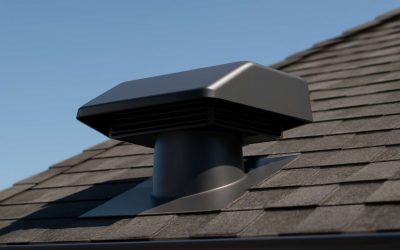
Ventilation fans suck excess moisture, odor and airborne pollutants out of bathrooms, closets, mud rooms, laundry rooms, home gyms and other rooms. Without ventilation, these pollutants can cause wood framing and drywall to deteriorate and damage ceilings and other surfaces. Ventilation fans also help control mold and mildew, clear steamy mirrors and make for a cleaner, healthier indoor environment. In some areas, ventilation fans are required by building codes, especially if there is no operable window.
There are a number of ventilation fan options to choose from, including ceiling insert fans and inline fans. Ceiling insert fans suck air through a duct and out the roof, while inline fans are installed directly into the ductwork of a ventilation system. Both types are available with a variety of controls, including humidity sensors and motion sensors. Humidity sensors automatically trigger the fan when humidity rises in a room, and some models have the option of switching off when humidity returns to a safe level. Motion sensors detect movement and turn on the fan only when someone is in the room, saving energy.
When selecting a ventilation fan, look for one that has a high CFM (cubic feet per minute) rating to ensure it can move enough air to properly ventilate the room. It is also important to consider the volume of air that needs to be exchanged; different areas will have varying requirements. To determine this, consult your local building codes for suggested air changes for a given room size and activity level.
The ductwork that connects the ventilation fan to the outside of the house is a critical part of the system, as it helps to direct the flow of air where it is needed most. Having a long, uninterrupted run of ductwork is essential to ensuring the best performance from a ventilation fan. If the ductwork is too short or disconnected from the fan, it will not be able to do its job and can actually cause more problems.
Another important consideration is noise level, as many ventilation fans can be quite noisy, particularly at higher speeds. To reduce the sound level, look for a fan with a low sone rating, which measures how loud the fan is in decibels. A sone rating of 4.0 or lower is relatively quiet, while 6.0 or higher is very loud.
Most ventilation fans are connected to the ventilation system by ductwork that runs throughout the house. This ductwork can be sealed and insulated to maximize energy efficiency. The benefits of an efficient ventilation fan can easily outweigh the extra cost of a duct upgrade. To further reduce energy costs, look for ENERGY STAR certified ventilation fans, which use up to 50% less energy than standard models. These fans are also eligible for rebates in some areas.



0 Comments